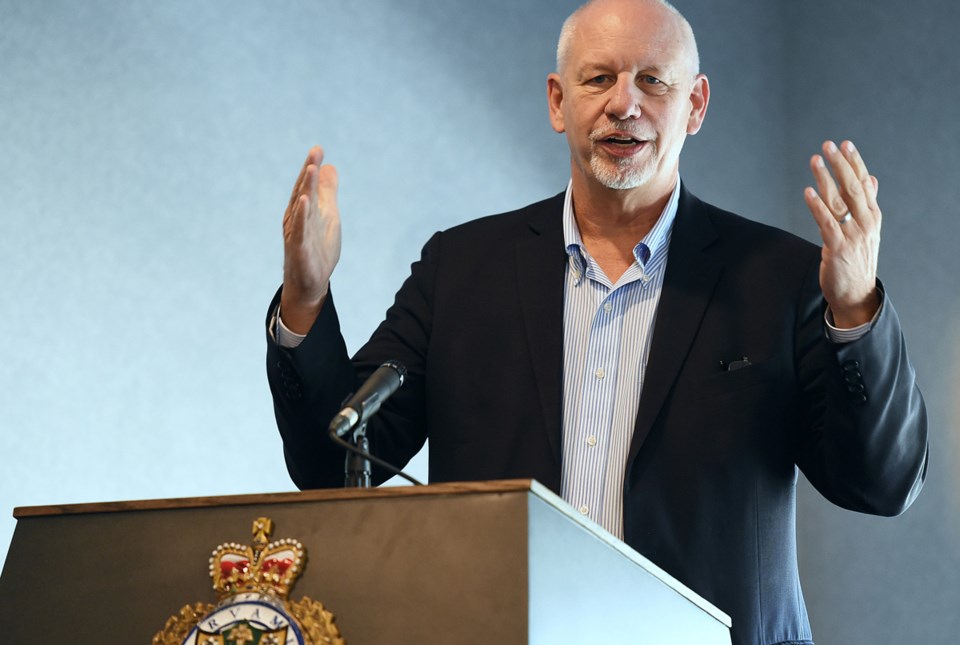You’ve probably heard the City of �鶹��ýӳ��is developing a city-wide plan, otherwise known as the �鶹��ýӳ��Plan.
In fact, �鶹��ýӳ��hasn’t had a city-wide planning process since 1995 and is the only municipality in the region that doesn’t have a long-range city-wide plan.
No wonder the city is in such chaos!
Chaos, of course, being a relative term, depending largely on your financial situation, where and how you live and how you get around.
���Բ�ɲ���…
I heard more about the �鶹��ýӳ��Plan this week from Gil Kelley, the city’s chief planner, and Susan Haid, the city’s deputy director of planning.
Except Kelley and Haid were not at city hall, but on the seventh floor of the �鶹��ýӳ��police’s Cambie Street precinct, where they addressed the �鶹��ýӳ��Police Board.
In my time covering the board, it is unprecedented to have the city’s top planners talking to cops and police policy advisors at a public meeting about planning.
The location was not lost on Kelley, who said, “You might sort of wonder up front – what does the police board have to do with the plan?”
His response: “This is not just a plan for streets and buildings in the city. It’s really looking holistically at what kind of community we want to be, and a big part of that is community well-being.”
Kelley said well-being can be measured in the pressures people are experiencing regarding the housing affordability crisis.
He also pointed to the impacts of drug-related crime on residents, the overdose crisis and concerns over climate change, particularly from youth.
Homelessness and people living with a mental illness are other issues police often find themselves responding to in a city that anti-poverty advocates say has failed its most vulnerable.
“We know that we have a public here who is feeling levels of anxiety that may not have been felt in many decades in Vancouver,” Kelley told the board, which includes Mayor Kennedy Stewart.
Haid said the early feedback in developing the plan, which will take another two-and-a-half years to complete, speaks to that anxiety.
“Overall, at this point in looking at our data, we are getting feedback that life is getting a little bit worse,” she said, noting safety, inclusion, affordability and displacement were themes identified that touch some of the police’s work.
Kelley and Haid emphasized the �鶹��ýӳ��plan is not just about zoning and neighbourhood density, but a strategy that sets out what people want their city to look and operate like in 30 ��to 50 years.
They also emphasized the need for the provincial and federal governments to be on board with the plan. Both levels of government are crucial to bring relief to the crises of homelessness, affordable housing and the overdose crisis.
“�鶹��ýӳ��can in no way, on its own, manage its future in terms of investments,” Haid said.
Regardless of what the city will look like in the future, it is a fact that growth will translate to more people and more police calls, as it has in present day Vancouver.
After Kelley and Haid spoke, the board heard that “priority one” response times increased from an average of eight minutes and 44 seconds in 2010 to 10 minutes and 34 seconds in 2019.
“We study this every which way to Sunday mathematically and, anecdotally, our officers tell us it’s just harder to get around,” said Drazen Manojlovic, the director of the department’s planning, research and audit section.
In addition, police calls for service increased from 221,385 in 2010 to 265,232 in 2019. That same period saw the property crime rate surge 22.3 per cent higher than in 2010.
As Chief Adam Palmer noted at the board meeting, up until December 2019, the VPD was operating with fewer officers than it did in 2010.
So how does an increase in calls and congestion fit into the �鶹��ýӳ��Plan?
Kelley told me after the meeting the city has long focused on getting people out of their cars and building a city where walking, cycling and taking transit are more efficient and environmentally friendly.
“But we’re not going to ask officers to get on the SkyTrain and go to a crime scene,” he said, adding there needs to be more conversations about giving first responders priority on the streets.
Palmer said he is glad the VPD is involved in the discussions around creating the �鶹��ýӳ��Plan, which could also see the development of a centralized police headquarters.
“We already have a great city, but if we’re going to make it healthier and progress with a plan into the future, police and public safety has to be a big component of that,” the chief said.
Meanwhile, the population grows, as does congestion, the cost of housing and the number of people in crisis, whether that be manifested in the search for affordable housing, treatment for an addiction or shelter from the cold.
So: �鶹��ýӳ��in 2050 has got to be better than �鶹��ýӳ��in 2020.
For everybody’s sake.
@Howellings
��
��



